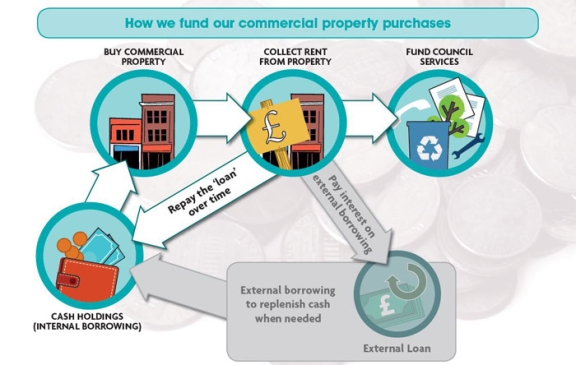Christmas and New Year closure information
Our council offices and phone lines will close at 4pm on Wednesday 24 December and reopen at 9am on Monday 5 January 2026.
See our service arrangements for customers during this time.
The council has published its Commercial Property Investment Strategy 2018-21 with the aim of openly setting out its approach to buying commercial property. The strategy also outlines the comprehensive business appraisal the council takes before buying any commercial properties.
In general, one of the key aims of the strategy is to generate much needed income to support council services and help deliver the strategic vision for Norwich.
To find out more about this strategy, we’ve listed some frequently asked questions.
Like all local authorities, Norwich City Council is facing further cuts to the money it gets from the government. The council has to make £10m of savings in the next four financial years from a total gross budget of £57m - this is in addition to £33m of savings already made in the last 8 years.
We must ensure we are a forward-thinking council with a proactive and ambitious appetite for income generation so that we can help maintain the services that matter most to residents.
Previously the council relied on putting its cash holdings in accounts with high interest rates which give a good rate of return that could then be reinvested in council services. However, with interest rates now so low this is no longer the best option.
Instead, a good alternative is to invest our cash holdings in commercial properties which bring in a healthy rental income and can be sold at a later stage.
As part of the council’s longer term financial strategy, it’s proposing in its budget to invest a further £50m in commercial properties across the two financial years of 2019-21.
By using our cash holdings we are effectively borrowing money from ourselves – something that’s called ‘internal borrowing’ and it’s this money we currently use to fund the purchases. This allows us to generate a profit to help fund frontline services
But borrowing money from ourselves is only a short term solution. In the longer term we will have to pay back what we’re borrowing internally with external borrowing. So, in effect, by borrowing internally, we are temporarily making additional savings by not having to pay the interest costs of having an external loan.

The council uses an expert adviser to identify the best property investments. Where possible and appropriate, we invest in Norwich. But part of the specialist advice we received was to buy properties in different areas of the country and in a range of business sectors to protect ourselves from putting all of our eggs in one basket.
| Address | Price | Date |
|---|---|---|
| The Gym, Ramsgate | £2.2m | September 2017 |
| Lloyds Bank, Gentleman’s Walk, Norwich | £6.8m | December 2017 |
| Oakland International, Eismann Way, Corby | £3.9m | March 2018 |
| 15-23 London Road and 4-8 Bedford Street, Norwich | £9.4m | April 2018 |
| 163 Cambridge Science Park, Cambridge | £3.8m | October 2018 |
| St Giles House, Norwich | £2.3m | December 2018 |
| 1 Featherstone Road, Wolverton Mill, Milton Keynes | £4.9m | July 2019 |
| Extension to Oakland International, Eismann Way, Corby | £3.3m | August 2019 |
| Kineton Road, South Worcs Business Park, Southam | £6.5m | September 2019 |
| Travelodge, Edinburgh Gate, Harlow | £6.2m | November 2019 |
| Units C,E,F Stafford Park 6, Telford | £14.5m | February 2020 |
| Lawrence House, St Andrews Hill, Norwich | £6.9m | March 2020 |